#Microplastics filter
Explore tagged Tumblr posts
Text
#Hydrogel technology#Microplastic removal#Water purification#IISc innovation#Pollution control#Clean water tech#Water treatment#IISc hydrogel#Microplastics filter
1 note
·
View note
Text

New foam filter achieves high microplastic removal rates in initial testing
Wuhan University-led research is reporting the development of a revivable self-assembled supramolecular biomass fibrous framework (a novel foam filter) that efficiently removes microplastics from complex aquatic environments. Plastic waste is a growing global concern due to significant levels of microplastic pollution circulating in soil and waterways and accumulating in the environment, food webs and human tissues. There are no conventional methods for removing microplastics, and developing strategies to handle diverse particle sizes and chemistries is an engineering challenge. Researchers have been looking for affordable, sustainable materials capable of universal microplastic adsorption. Most existing approaches involve expensive or difficult-to-recover adsorbents, fail under certain environmental conditions, or only target a narrow range of microplastic types.
Read more.
11 notes
·
View notes
Text
everyone trying to minimise their intake of microplastics is going to be so mad when we invent the blood filter that can extract it and everyone who was plasticmaxxing gets a cool toy made from their poison blood as a souvenir
24K notes
·
View notes
Text
As government regulators focused on reigning in air pollution, companies were busy generating new sources of pollution, including plastics and PFAS, the so-called forever chemicals. PFAS, which stands for perfluoroalkyl and polyfluoroalkyl substances, are a large group of compounds used, among other things, to make fabric stain-resistant and pans nonstick.
Over time, these modern-era substances — which famously take decades to millennia to degrade — have leached into the environment, reaching every corner of the planet, no matter how tall or deep. Microplastics, PFAS, and some other compounds, such as pesticides, are now so widespread that they’ve essentially become part of our biome, not unlike bacteria or fungi.
They’re so common, in fact, that they’re even found in the rain.
“To be honest, I cry, because there’s no walking this back,” Brahney said of microplastic pollution. “These particles don’t break down at a time scale that would be relevant. So yeah, we’re not escaping that.”
0 notes
Note
lys how do you feel abt whale sharks?
WHALEE SHARKKSS i am in awe of them!!! they’re just big beautiful giants very majestic
#OOH OHOHHH i liked this question a lot#i love massive animals which turn out to be gentle giants .. love filter feeders <33#hate the microplastics#thank you tokey dokey <33#what ab uu??? :))#jellies🪼#twilight zone༄#also ‘lys’ is the greatest nickname i’ve ever been bestowed hashtag smiling at my phone like a manic lunatic
1 note
·
View note
Text
Okay yeah that's what I thought
Well maybe then you should read the op again bc it was very much about companies being like "oh we're so proud of using plastic instead of animal products 🥰" like they gave a single shit about it, bc no matter what plastic is STILL bad for the environment, and if they did gave a single shit they would use durable methods of tanning, make more durable products and work only with materials from organic and animal wellbeing focused farms, and makes it so it's still somehow affordable.
Corporations don't give a single shit about animals or environment and that was what the post was about, not about the consumer side of the problem.
companies will be like “we’re so proud we don’t make anything with feathers, leather or fur” and then make stuff out of synthetic materials that will not decompose but will shed micro-plastics with every wash like…..yas so good for the animals so animals rights
#google is you friend but so are reading comprehension skills#the only plastic based materials that i can accept as eco friendly are the 100% recycled ones#which exist i mean there's still the microplastic problem but at least it's not creating more plastic#you're right this is a capitalism and consumerism problem first but pls note that it wasn't what the post was about#btw 'natural' tanning methods can also have a bad impact locally if you don't follow safety protocols#using bio-produced poison to make a product rot-proof is still using poison#don't touch that shit‚ don't inhale it and don't fucking release the used water in the wild without filtering#bio poisons are easier to process than mineral ones but they're STILL poisons that's the whole fucking point of tanning#that being said they're still processable when a oak tree die the whole ground around it doesn't become toxic for ages#it's all a matter of proportions#but bio-tanned leather as a by-product of reasonable meat industry? should be good in theory#same with fur‚ and wool is sustainable and animal-friendly as long as we don't overconsume#'vegetal' leather is full bullshit tho it's plastic in disguise
37K notes
·
View notes
Text
Everything You Need To Know: The Dangers of Polyester
Polyester has a heavy impact on the environment and our overall health. When you think polyester, you may associate it with other natural fibers, such as cotton or wool. But surprise – polyester isn’t natural at all! On the contrary, there are many dangers of polyester that we need to be aware of. Polyester breaks down into tiny fragments called microfibers. These plastic fragments are everywhere…

View On WordPress
#antimony#dangers of polyester#eating plastic#eco friendly#laundry filters#microfibers#microplastics#plastic clothes#plastic in the body#pollutes oceans#polyester is plastic#sensitive skin#sustainable#toxic chemicals#wanderlustrachel#wanderlustrachelblog
0 notes
Text
From the article:
The two students presented their groundbreaking project at the 2024 International Science and Engineering Fair (ISEF); a device that operates by using ultrasound waves to push microplastic particles to one side of a water flow, allowing clean water to pass through while trapping the contaminants. In their tests, the system successfully captured up to 94 per cent of microplastic particles, showing promise for real-world applications. "If we could refine this, maybe use more professional equipment, maybe go to a lab instead of testing from our home, we could really improve our device and get it ready for large-scale manufacturing," Justin told Business Insider. The duo envisioned their device being used in water treatment plants, directly modifying the quality of water for daily use. This application could significantly reduce the amount of microplastics that end up in water sources, protecting ecosystems and human health.
#microplastics#water filtration#plastics#plastic pollution#pollution#good news#environment#sustainability#hope#hopepunk#ecology#water conservation
2K notes
·
View notes
Text
#good news#nature#science#environmentalism#environment#microplastics#plastic#plastic pollution#plastic pollution solutions
1K notes
·
View notes
Text
Could plants be the answer to the looming threat of microplastic pollution? Scientists at UBC's BioProducts Institute found that if you add tannins—natural plant compounds that make your mouth pucker if you bite into an unripe fruit—to a layer of wood dust, you can create a filter that traps virtually all microplastic particles present in water. While the experiment remains a lab set-up at this stage, the team is convinced that the solution can be scaled up easily and inexpensively once they find the right industry partner.
Continue Reading.
1K notes
·
View notes
Text
The Best News of Last Week - August 21, 2023
🌊 - Discover the Ocean's Hidden Gem Deep down in the Pacific
1. Massachusetts passed a millionaire's tax. Now, the revenue is paying for free public school lunches.
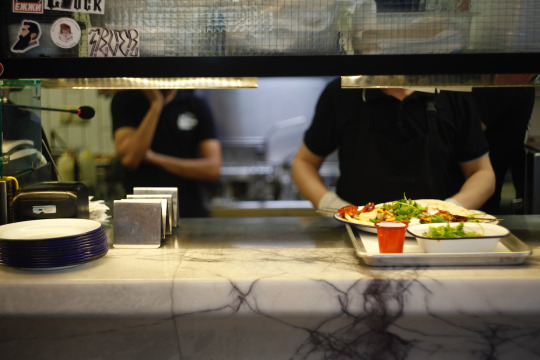
Every kid in Massachusetts will get a free lunch, paid for by proceeds from a new state tax on millionaires.
A new 4% tax on the state's wealthiest residents will account for $1 billion of the state's $56 billion fiscal budget for 2024, according to state documents. A portion of those funds will be used to provide all public-school students with free weekday meals, according to State House News Service.
2. Plant-based filter removes up to 99.9% of microplastics from water
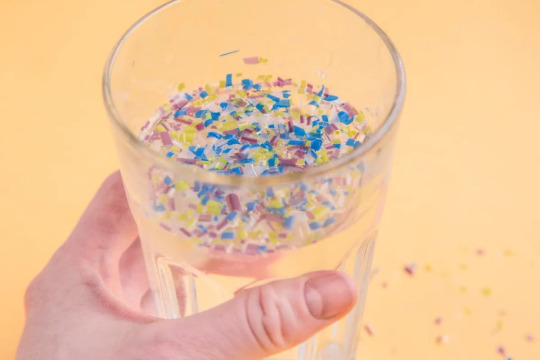
Researchers may have found an effective, green way to remove microplastics from our water using readily available plant materials. Their device was found to capture up to 99.9% of a wide variety of microplastics known to pose a health risk to humans.
3. Scientists Find A Whole New Ecosystem Hiding Beneath Earth's Seafloor
youtube
Most recently, aquanauts on board a vessel from the Schmidt Ocean Institute used an underwater robot to turn over slabs of volcanic crust in the deep, dark Pacific. Underneath the seafloor of this well-studied site, the international team of researchers found veins of subsurface fluids swimming with life that has never been seen before.
It's a whole new world we didn't know existed.
4. How solar has exploded in the US in just a year
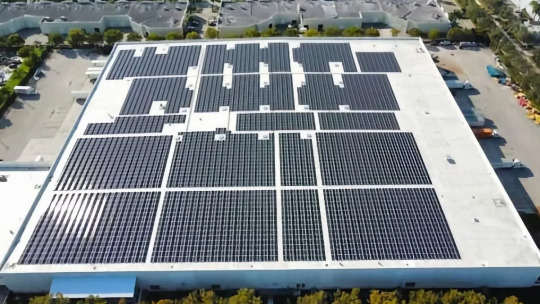
Solar and storage companies have announced over $100 billion in private sector investments in the US since the passage of the Inflation Reduction Act (IRA) a year ago, according to a new analysis released today by the Solar Energy Industries Association (SEIA).
Since President Joe Biden signed the IRA in August 2022, 51 solar factories have been announced or expanded in the US.
5. Researchers have identified a new pack of endangered gray wolves in California
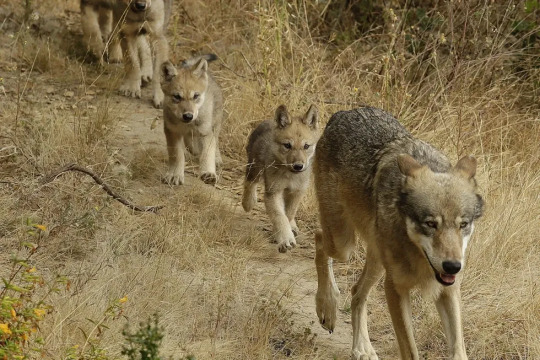
A new pack of gray wolves has shown up in California’s Sierra Nevada, several hundred miles away from any other known population of the endangered species, wildlife officials announced Friday.
It’s a discovery to make researchers howl with delight, given that the native species was hunted to extinction in California in the 1920s. Only in the past decade or so have a few gray wolves wandered back into the state from out-of-state packs.
6. Record-Breaking Cleanup: 25,000 Pounds of Trash Removed from Pacific Garbage Patch
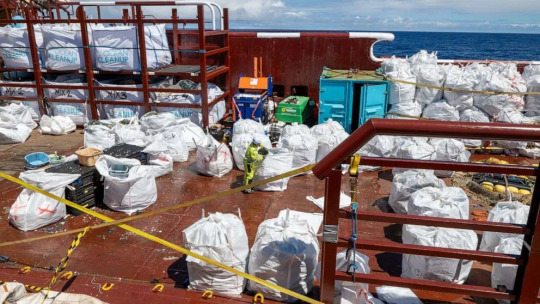
Ocean cleanup crews have fished out the most trash ever taken from one of the largest garbage patches in the world.
The Ocean Cleanup, a nonprofit environmental engineering organization, saw its largest extraction earlier this month by removing about 25,000 pounds of trash from the Great Pacific Garbage Patch, Alex Tobin, head of public relations and media for the organization
7. The Inflation Reduction Act Took U.S. Climate Action Global
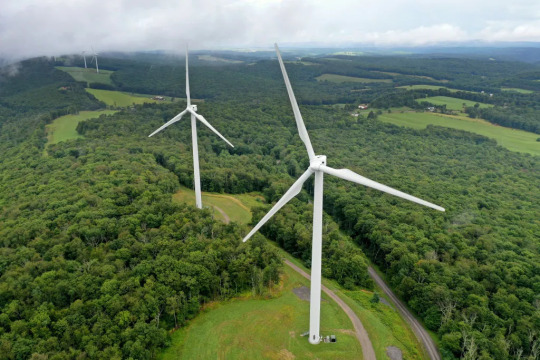
The U.S. Inflation Reduction Act (IRA) aimed to promote clean energy investments in the U.S. and globally. In its first year, the IRA successfully spurred other nations to develop competitive climate plans.
Clean energy projects in 44 U.S. states driven by the IRA have generated over 170,600 jobs and $278 billion in investments, aligning with Paris Agreement goals.
---
That's it for this week :)
This newsletter will always be free. If you liked this post you can support me with a small kofi donation here:
Buy me a coffee ❤️
Also don’t forget to reblog this post with your friends.
1K notes
·
View notes
Text
Round 1 - Phylum Mollusca

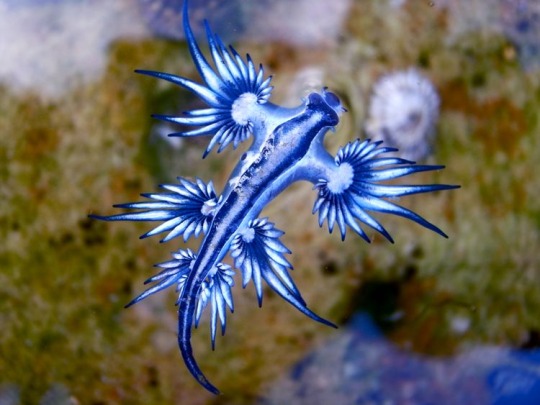

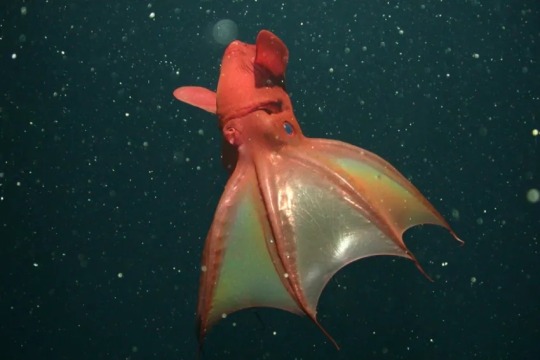
(Sources - 1, 2, 3, 4)
The second largest phylum, Mollusca contains over 76,000 living species and somewhere between 60,000 and 100,000 extinct species, including the ammonites and helcionelloids. Living groups include the chitons, solenogasters, caudofoveates, cephalopods (octopuses, squids, cuttlefish, nautiloids, etc.), scaphopods, gastropods (slugs and snails), and bivalves.
Molluscs are highly diverse, living on land, in freshwater, and in saltwater, where they comprise over 23% of all named marine organisms. The most diverse molluscs are the gastropods which comprise over 80% of known molluscs. Due to their high diversity, the only things most molluscs have in common are a soft body composed almost entirely of muscle, a mantle with a significant cavity used for breathing and excretion, the presence of a radula (bivalves excluded), and the structure of their nervous system.
Many molluscs are endangered due to collecting and killing individuals for their meat and/or decorative shells.

Propaganda under the cut:
Cephalopods are one of the (if not the) most neurologically advanced of all invertebrates and are capable of using tools, solving puzzles, and play.
Masters of camouflage, many cephalopods can change color, shape, and texture to hide from predators, sneak up on prey, and communicate with each other
The largest molluscs are the Giant Squid (Architeuthis dux), with 12–13 m (39–43 ft) long females and 10 m (33 ft) long males, and the Colossal Squid (Mesonychoteuthis hamiltoni) which is estimated between 10 m (33 ft) and 14 m (46 ft) long. The Giant Squid has much longer tentacles, but the Colossal Squid is heavier, reaching a mass of at least 495 kilograms (1,091 lb). The largest specimens of Colossal Squid, known only from beaks found in sperm whale stomachs, may perhaps weigh as much as 600–700 kg (1,300–1,500 lb).
Mollusc shells make up most of the “seashells” washed ashore, and are created by the animal via secretions of chitin and conchiolin from its mantle edge. Not all molluscs have shells (ex: nudibranchs) and for some, the shell is internal (ex: cuttlefish). Mollusc shells come in many beautiful colors, shapes, and sizes.
Most molluscs have eyes, and all have sensors to detect chemicals, vibrations, and touch. Of the phyla we have covered so far, their senses are the most developed.
Conchs can look at you like this:

(Source)
All cone snails are venomous, and some of the larger species are some of the most venomous animals in the world. Even though some species’ stings are fatal to humans, their sophisticated venom has saved lives through its use in neurological research.
Humans don’t just use mollusk meat and shells, but also luxuries like pearls, mother of pearl, Tyrian purple dye, and sea silk. As stated above, many species are now endangered due to human use, but some are farmed for their meat, pearls, and shells. The farming of bivalves is more ecologically-friendly than the farming of chordates as, rather than create waste, bivalves like mussels and oysters actually clean the water.
As filter-feeders, bivalves are natural water filters. A single 5.08 cm (2 inch) clam can filter up to 10-12 gallons of seawater a day. They can even filter microplastics out of polluted water.
The largest bivalve is the Giant Clam (Tridacna gigas) which can weigh over 200 kilograms (440 lb), measure as much as 120 cm (3.11 ft) across, and have an average lifespan in the wild of more than 100 years.
Cover your ears, kids. Terrestrial slugs, which are hermaphroditic, have some of the most intimate sex on the planet. A pair of slugs will suspend from a chord of mucus, heads down, and intertwine their bodies in a tight spiral. They will then evert their penuses and entwine them as well, exchanging sperm while hanging in midair. Slug porn, narrated by Sir David Attenborough, for your viewing pleasure.
#round 1#animal polls#we’ve reached my first personal favorite because cuttlefish are genuinely one of my all time favorite animals#mollusca
200 notes
·
View notes
Text
🛐 APPARENTLY, I’M ALREADY DEAD — ACCORDING TO CALIFORNIA
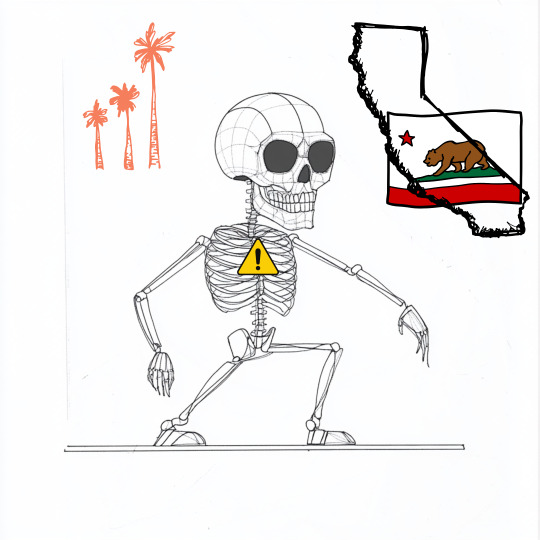
So according to the State of California? I’m a one-man chemical spill with a social security number.
Apparently, my power cord is trying to assassinate my sperm. My flashlight is plotting uterine sabotage. And the ceramic mug I drink out of every morning? Yeah — that bitch wants me in chemo by 2037.
What. The fuck. Man.
💀 PROP 65: THE LAW THAT TURNED EVERYTHING INTO A CANCER CONSPIRACY
You think I’m joking? Welcome to Prop 65. A law so paranoid, it makes QAnon look like a book club.
It doesn’t ban toxic shit. It just warns you about it.
“WARNING: This item may cause cancer, birth defects, or turn your scrotum into a haunted house.”
No specifics. No dosage. Just a legal shrug that screams 'LOL good luck.'
⚰️ THINGS THAT HAVE GIVEN ME PROP 65 DEATH THREATS:
A pair of earbuds
A goddamn garden hose
A lock for my gym bag
A set of Tupperware lids
TUPPERWARE LIDS. Apparently meal prep is now a form of assisted suicide.
🧪 SCIENTIFICALLY SPEAKING, I SHOULD’VE BEEN DEAD 19 PRODUCTS AGO
The warning threshold?
1 in 100,000 chance of cancer over 70 years
Translation: If you bathed in a chemical daily for 7 decades, your odds of getting cancer might go up by 0.001%
But California’s like:
"Label it anyway. People need to panic."
Because fear sells. And lawyers love it wet.
🔍 WHO WRITES THESE LABELS? THE GHOST OF WEBMD?
"WARNING: Handling this extension cord may cause irreversible testicular damage. Wash your hands after glancing at it."
Meanwhile:
Alcohol? Sold freely.
Weed? Legal.
Sugar? Unchecked poison.
But yeah, the real killer? Your keyboard cable.
🤡 THE INSANITY OF MODERN SAFETY THEATER
It’s not about protecting you. It’s about covering their asses.
They don’t have to prove it’s dangerous. They just have to say, “Might be.”
"Might give you cancer. Might not. Good luck, dipshit."
🔥 NEWSFLASH: YOU’RE ALREADY DYING
You breathe microplastics. You sleep next to Wi-Fi. You drink tap water filtered through God knows what.
And now your yoga mat is trying to assassinate your future children according to a label stapled on by a lawyer with carpal tunnel.
🧠 TL;DR
California thinks I’m a chemical experiment with a credit score.
The warning label on my Amazon delivery made me question my life expectancy, masculinity, and flooring material all at once.
I didn’t buy electronics. I bought a long-form suicide note.
💣 CALL TO ACTION
🔁 Reblog if California made you scared of your blender ⚰️ Save this before your shower curtain gives you leukemia 🧪 Share if you’ve ever licked a USB cord and lived to tell the tale 🛐 Bookmark this if you now fear your IKEA drawer handles
⚖️ LEGAL DISCLAIMER: This post is Blacksite Literature™, weaponized satire, post-industrial toxin liturgy, and anti-panic doctrine protected by the Prop 65 warning label on my fucking shoelaces.
If you’re offended: Please do not handle yourself. Exposure may cause disappointment, infertility, and sudden literacy.
🛐
🔁Reblog to keep my signal to mankind going strong.
#blacksite literature™#satire of safety culture#prop 65 panic#modern health absurdity#chemical anxiety meltdown#spilled ink#writing#weekends#twitter#tweets#tweet#memes#meme#writers on tumblr#funny#archive of our own#california#humor
31 notes
·
View notes
Note
*Having walked, or in your case ambled in some uncomfortable looking fashion, we have arrived at the flat above the @pret-a-metatron . I open the door to see @e-w-w-morningstar and the two Thomases @mr-crawleigh
Angelo produces a fine charcuterie spread from the fridge and places it on the kitchen counter.*
Rollerblades, actually. Rather handy mobility aid, albeit a tad non traditional.
They trailed goop in the literal tracks of their blades, rolling to a fault before the counter. They cocked their head.
You eat dry, moldy, filtered cow’s blood gurgle on purpose? With cured animal flesh and pop pop pop crackers?
The flat already was bending to their influence. Verdant plants freshly watered began to wilt, microplastics invading their soil. The clean dishes in the cupboards covered in a fine gilt of dust, grease, and food residue. The floor grew sticky and covered itself with crumbs.
#//excuse the lateness i am#//swamped#//does this make sense in the timeline? no.#//but it’s already established to have happened prior to boiling pollution so#pol and ange#the boy in white#pestilence couldn’t have taught this boy one social cue?! one?!?
27 notes
·
View notes
Text

Low-cost method removes micro- and nanoplastics from water
Researchers at the University of São Paulo (USP) in Brazil have developed a novel nanotechnology-based solution for the removal of micro- and nanoplastics from water. Their research is published in the journal Micron. Tiny plastic particles are ubiquitous in the world today and may currently be one of the most important environmental problems, after the climate emergency and the accelerating extinction of species and ecosystems. Microplastics are in the soil, water and air, and in the bodies of animals and humans. They come from everyday consumer goods and from wear-and-tear on larger materials. They are found everywhere and in every kind of environment. A major source is the water used to wash clothes made of synthetic fibers. Microplastics currently cannot be filtered out of wastewater and eventually penetrate the soil, water table, rivers, oceans and atmosphere.
Read more.
#Materials Science#Science#Microplastics#Plastics#Polymers#Environment#Nanoparticles#Nanotechnology#Biomaterials#Magnetism#Polyethylene terephthalate#PET#Enzymes
33 notes
·
View notes
Text
Sometimes I think about what a (naturalistic) pagan monastery would be like…
Since I was a kid I've been drawn to the extremes of religion, despite not wanting to go there myself, and I remember returning frequently to an image of some young Buddhist monks sitting in rows to meditate, with their saffron robes and bald heads. Sometimes when I'm stressed I watch documentaries about monks and nuns, my imagination wandering to that life of routine, purpose, dedication, and simplicity.
And yet in my own life, I don't believe in anything supernatural, I don't like things to be the same all the time, and it goes against my paganism to deny the flesh anything that isn't harmful to it (though admittedly I'm asexual so at least one aspect of deprivation wouldn't be a hardship) - nourishing the body with food is good, and enjoyment and pleasure are good.
I return to the dream of a monastery far away from the world, anyway. So it seems worth asking myself: what aspects of it appeal to me? And what might a pagan monastery look like, for my form of naturalistic paganism?
(I have a Pinterest board for this, because I'm that sort of person)
I think the
main reason why the idea appeals to me is that a monastery is an intentional community, dedicated to one purpose, where all the members have core values and purpose in common, and everything is set up to enable that purpose to be carried out. Another reason is the simplicity: simple living, lack of decision fatigue (because so much has been decided for you - what you wear, when you eat, what time you get up, etc) and the ethical and environmental aspects of that simplicity. Incidentally, that's why Quakerism appeals to me even though my atheism precludes me from actually becoming a Quaker.
A lot of pagans would hate things to be so prescribed, and while obviously this is my own imaginative rambling and thus no one else's opinions need matter, I do also think that the nature of paganism is to be more free-flowing, intuition-led, and variable than the stricter forms of Christianity that you'd find in a monastery or convent.
So what would a pagan monastery be like? Here are some thoughts:
Sustainability - food gardens, chickens for eggs, solar panels and other forms of renewable energy (depending on local climate), rainwater collection and filtering, beeswax candles (and beehives outdoors!)…


There would be a focus on being of "service" to the local community, including supporting local activism for wider causes. Though "service" is the wrong word, really - more like being in reciprocal relation with the local community, and with the earth itself, and with humanity.
Clothes - if there was going to be any restriction, it would be about the fabric - natural fibres that do not release microplastics. It feel very un-pagan to litigate people's personal styles any further than that! I do imagine what feels right to me for that setting: loose comfortable clothing, probably linen in the summer and cotton and wool in the winter. Naturally-dyed fabrics tend to have earthier colours, and while they can be very bright they aren't neon bright in the way artificial dyes can be, so (to me) they're easier on the eyes.
Two communal altars, one indoors and one outdoors, decorated seasonally and used for rituals. The rooms would be comfortable, with a variety of seating options and big windows to let in as much natural light as possible. The communal altars would probably be fairly simple by default, so that people can add to them with more specific items for their rituals.
Smaller altars dotted around, especially outside, similarly simple but each with a slight enclosure around them (eg tucked in a corner of a garden with a hedge obscuring the individual from view), so that people have places to go and meditate, perform small individual rituals, etc.


(I think the image on the left is by @/ca.sa.tierra on instagram, but I'm not 100% sure. The right image is by Dominc Alves on flickr)
The structure would be communal, based on anarchist principles as I understand them - non-hierarchical, with major decisions made by majority consensus (with a lot of weight put on the advice of experts, where appropriate) - of course people could have individual roles and responsibilities, and preferences and limitations (eg disabilities) would be taken into account - say for example there might be a cooking rota, or there might be just a couple of people who love cooking and everyone is happy with them taking on that responsibility. Anyone could lead rituals, and the "official" seasonal ones would be designed communally (and if a leader was necessary, that would be subject to a vote too)…
The space! This is the most fun bit to imagine… a mixture of big rooms with lots of natural light and smaller cosier rooms, small individual bedrooms with total freedom for personalisation so long as the core values of the group were respected (simplicity and environmental considerations, mainly), a mix of gardens cultivated for food or to support the local ecosystem in particular ways or for sitting and meditating in and also outside areas left wild and untamed.










(all images unless otherwise stated can be found on the above linked pinterest board - the original sources can usually be found that way)
18 notes
·
View notes